Ernest Hemingway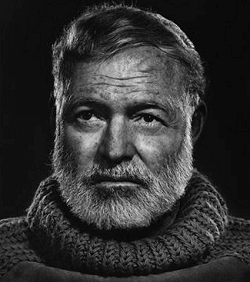
Ernest Miller Hemingway, born on 21st July 1899, was an American writer who produced a number of novels, short stories and so on. He was also a journalist in America. Hemingway named his famous writing style "The Iceberg Theory". It got so popular in the world of literature and writing as it was very economical and understanding and also had a very strong influence on 20th-century fiction. The mid-1920s, as well as the mid-1950s, was the period when Hemingway produced most of his works, and in 1950 he was awarded the Noble prize in Literature. His works include a list of seven novels, six short-story collections, and two non-fictional works. Many of his works were also published after the writer's unfortunate demise, which includes three of his novels, three nonfiction works and four short-story collections. A lot of his works are even counted under the Classics of American Literature. His writings weren't the only reason behind his popularity, as he was also admired by the later generation for his adventurous lifestyle and public image. Raised in Oak Park, Illinois, Hemingway completed his high school at a local school, namely, "Oak Park and River Forest High School", and later joined as a reporter for a few months for The Kansas City Star. After that, he left for the Italian Front, where he was enlisted as an ambulance driver in World War I. In 1918, he was seriously injured, which eventually made him leave the battleground and return home. His wartime experiences were the bricks of his novel "A Farewell to Arms", which came out in 1926. In the year 1921, the writer got married to Hadley Richardson. She was the first wife of Hemingway, followed by three others. The couple, after marriage, moved to Paris and started working as foreign correspondents. While working there, he was influenced by the modernist artists and writers that belonged to the "Lost Generation" non-native community of the 1920s. The debut novel written by Hemingway was 'The Sun Also Rises' which got published in the year 1926. The writer didn't maintain a sturdy married life and faced a lot of challenges in his personal relationships. He divorced his first wife, Richardson, in the year 1927, a year after the release of his debut novel. After the divorce, he married Pauline Pfeiffer, but their marriage didn't work as well, and they got divorced soon after he got back from the Spanish Civil War. 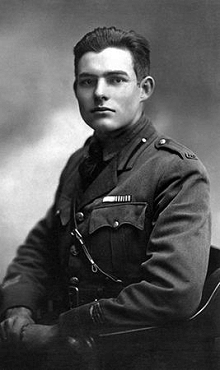
The war started in 1936 and went on till 1939, and Hemingway covered it as a journalist, which became the base of his 1940 novel called 'For Whom The Bell Tolls'. 1940 was also the year in which he got married for the third time to Martha Gellhorn. The writer left his third wife as well when he met Mary Welsh in London. It was the later years of the Second World War, and Hemingway was there with the Allied troops, working as a journalist at the liberation of Paris and the Normandy landings. Hemingway's marriages didn't last more than five years if not three. The writer had many near-death experiences being a part of the Spanish Civil War and the Second World War. Hemingway almost died in two consecutive plane crashes in 1954. The injuries of that incident left him in ill health and a lot of pain for the rest of his life. The writer maintained residences in Key West, Florida, in the 1930s and Cube during the 1940s to 1950s. During the year 1959, Hemingway purchased a house in Ketchum, Idaho. There, he committed suicide in the middle of the year 1961. EarlyClarence and Grace were the parents of Hemingway, and he was the second child of the couple. Born in 1899 in Illinois, which is a healthy suburban area situated on the west side of Chicago. He was born in the house of Clarence Edmonds Hemingway, who was a physician by profession, and his wife Grace Hall, who was a musician. His parents had a high reputation in the place where they lived. In the initial days of their marriage, the couple used to live with Grace's father, Ernest Hall. They named their son after Grace's father. Their first son was the second of his six siblings. Grace wanted to follow the Victorian convention of not separating children's clothing according to their gender, and Ernest strongly resembled his sister Marcelline lot. That is why Ernest's mother used to dress both siblings in the same frilly feminine clothes in order to make them appear like twins. Ernest also had long hair at that time. 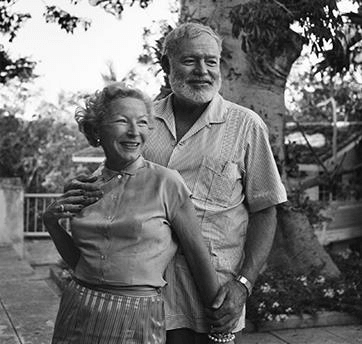
Hemingway's mother was known across the village for her music skills; although Hemingway wasn't much into his mother's art but was taught to play the cello by his mother despite his refusal to learn. Even though it wasn't much of his interest but he admitted later in life that those music lessons helped him a lot in his writing style, which can be observed in the "contrapuntal structure" of For Whom the Bell Tolls. In his adulthood, Hemingway even claimed to hate his mother, but in his biography, the author contradicted the fact by saying that both Hemingway and his mother shared similar energies and enthusiasms. During the earlier days of his life, the writer and his family used to travel to Windemere, in Michigan. There, the young writer used to go fishing, hunting and camping with his father in the woods and lakes of North Michigan. These early experiences were the reason behind his life-long passion for adventures and living alone in remote areas. Ernest Hemingway was a talented student and a good athlete. He attended River Forest High School from 1913 to 1917. The writer was good at boxing, water polo and so on. He used to perform orchestra with his sister and good grades in English classes. He also used to edit his school's magazine and yearbook under a pseudonym, and like most successful writers, he was also a journalist before he became a full-fledged novelist. After completing high school, the writer worked for The Kansas City Star as their club reporter. It was a short period of six months for which he worked for that place; he took with him some ideas that he learned from there, like- 'Try to use short sentences and paragraphs. Use professional English, and don't be negative'. Writing styleHemingway's first novel "The Sun Also Rises" was praised by The New York Times, as they wrote about it in their newspaper in 1926; also in those days, Hemingway became famous for their spare and tight prose writing style of his in "The Sun Also Rises", which is believed to change the nature of American writing. It was Hemingway's influence on the style of contemporary writing and his remarkable narrative skills that got him the Nobel prize for Literature in 1954. 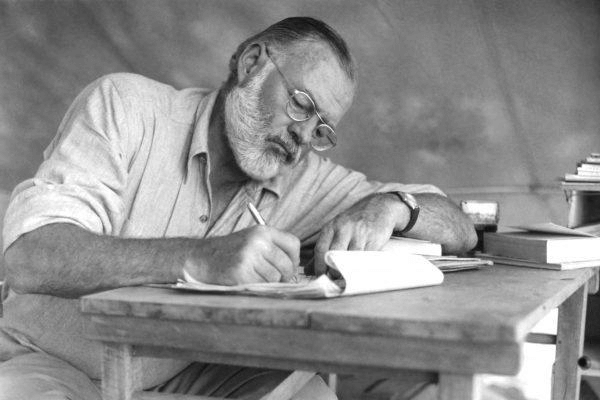
Hemingway named his immensely appreciated writing style the iceberg theory. The theory said that the facts are that part of the iceberg floats above the surface of the water, and the symbolism and supporting structure operate under the water surface, away from the eyes of the reader or observer. This concept of iceberg theory proposed by the writer is often referred to as the 'theory of omission'. Ernest Hemingway used to write 'and' instead of commas. The frequent use of polysyndeton in Hemingway's works may be an attempt to portray the immediateness of any event. Such sentences or the use of subordinate clauses in his later works can be a way to juxtapose surprising images and visions. People who were interested in Hemingway's works misinterpreted his leads frequently and used to be confused by the expression of emotions in his works. However, the writer did not want to disregard emotions completely but to represent them in a more scientific manner. According to Hemingway, it was a cakewalk to describe emotions but also pointless at the same time. The writer made collages of certain images in the attempt to grasp 'the real thing, the right order of motion and the reason behind an emotion and that would be the right explanation for a long period of time and if it is portrayed rightly enough, always.' ThemesHemingway's writing includes a number of themes, and that is why his works please a large audience. Diversity is there when we talk about themes in Hemingway's texts. There are themes of love, travel, wilderness, war and loss as well. To some of his admirers, Hemingway's work includes nature as a sacred place of rest and rebirth. The writer believed that nature is the place where a hunter would feel a moment of transcendence when they took the life of their prey. 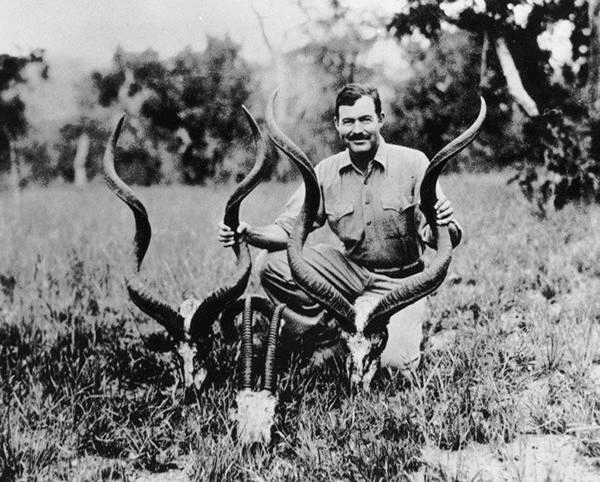
As the writer had a diverse range of themes included in his works, he also talked about the theme of sports in his works, but it was often observed that he was more interested in the athlete playing the sport rather than the sport itself. American Literature included a theme of 'dark women' against the 'light women'. Hemingway's highly appreciated novel, "The Sun Also Rises", has this American theme inverted as the 'dark woman' in this novel is a goddess and the 'Light woman' in his text, "The Short Happy Life of Francis Macomber", is a killer. Hemingway is criticized a lot because of his male-centric writing and his settings in texts that had males at the centre. He used to portray a male character positively, and females are represented negatively. Themes of women and death are clearly visible in the works of Hemingway. Death, for instance, is present throughout the texts written by him. If we take the example of 'Indian Camp', there is a mother who gives birth and a father who commits suicide, and there is left a young boy who is scarred mentally. But some critics consider that Hemingway's works are more complex with an explanation of the truth that is there in existence. It is believed that if emptiness is accepted, then redemption can be achieved at the time of death. Hemingway focused a lot on living an authentic life, and in most of his works, characters are living an authentic life which could be a reason behind the success of Hemingway's fiction. Hemingway's influence on LiteratureMary Hemingway, the fourth and the last wife of Ernest Hemingway, established Hemingway's foundation in the year 1965 in the name and memory of her late husband. In the next decade, she donated Hemingway's papers to the John F. Kennedy Library. Later, many Hemingway scholars came forth to access the donated papers. These scholars formed a society which was focused on supporting Hemingway's scholarship. Numerous awards have been established in Hemingway's honour to recognize significant achievements in the arts and culture, including the Hemingway Foundation/PEN Award and the Hemingway Award. In the year 2012, Hemingway was given a place in the Chicago Literary Hall of Fame. This achievement explains the influence, popularity and success of this great writer. Last years of Ernest HemingwayHemingway left his home in Cuba for around 20 years and went to Ketchum, Idaho, in 1960 to settle there. He temporarily resumed his work in his new residence but was soon hospitalized two times in the Mayo Clinic as he was suffering from depression and anxiety. The extraordinary writer could not live much longer as on 2nd July 1961; he committed suicide by shooting himself with a shotgun. His body was found in his house in Ketchum. ConclusionErnest Hemingway was an extremely skilled man whose works were near perfection and fine in their details. He was one of the few famous authors of the 20th century. The author's works are still appreciated and well known among the masses. The aura this writer offered in his works was virile, compelling the readers to experience the physical sensations of excitement, fear, and braveness just as he felt during wartime, bullfighting and hunting. Hemingway's exceptional writing style and his remarkable works made him a celebrity even before he reached middle age. Even though his popularity is still validated by the opinions of critics, the author's influence in the world of writing continues.
Next TopicBillie Holiday
|
 For Videos Join Our Youtube Channel: Join Now
For Videos Join Our Youtube Channel: Join Now
Feedback
- Send your Feedback to [email protected]
Help Others, Please Share









